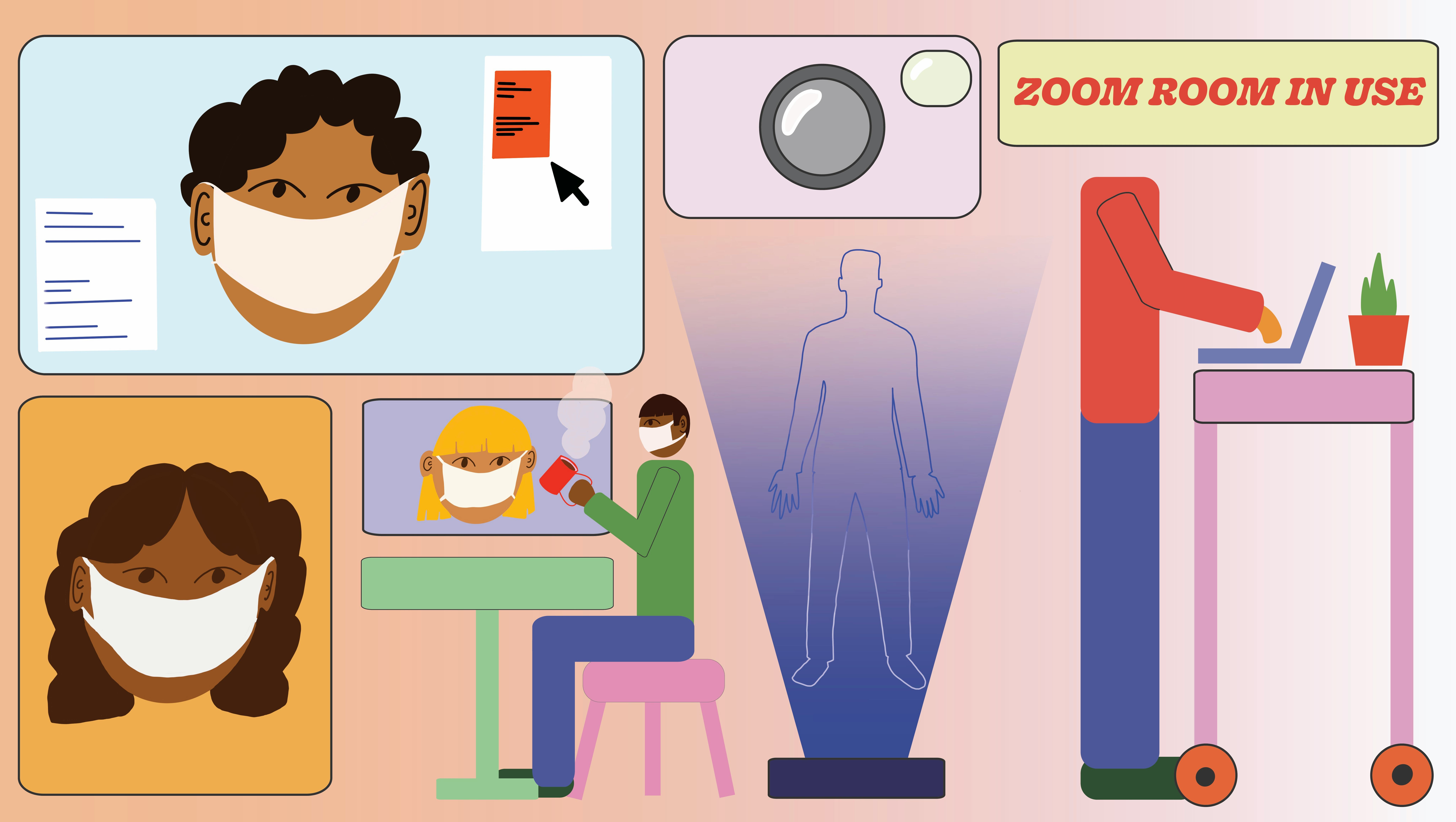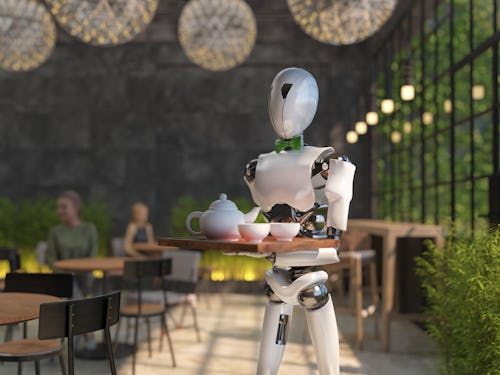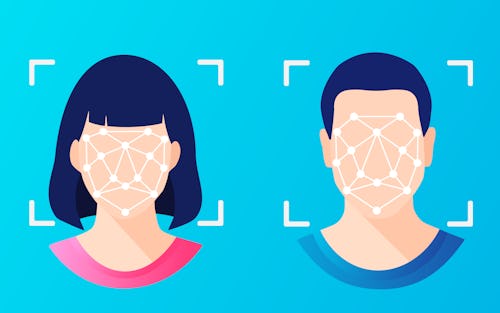
The coronavirus pandemic forced just about everyone to make changes to their everyday lives. Concerns about the transmission of the deadly virus made us view our daily routine in an entirely new light — we shifted to remote work and learning, we limited our interactions with others in public, and we leaned heavily on technology to keep us going. For most of us, these changes were sacrifices that we had to make in order to protect ourselves and our communities. But there were some folks who saw the pandemic as an opportunity — a chance to take the disruption of a generational tragedy and turn it into a cash cow.
With vaccine access on the rise across the world, people are starting to envision their post-pandemic routines. And the creators of new technology are doing everything they can to make sure their so-called innovations are a part of it. Some of this was inevitable — a novel, airborne virus simply accelerating our pace to an increasingly digital world, where we are all more connected while also being more distant.
But some of it is just straight up hucksterism — opportunistic, ghoulish attempts to cash in on fear. As you bravely re-integrate into the world, here is some of the technology that you might see, even though no one asked for it.
Robot servers
The coronavirus pandemic was particularly hard on restaurants, which struggled to stay open and find ways to serve customers in a safe and efficient way. While outdoor seating opportunities helped, and more and more of these businesses have re-opened as vaccines have become available, the industry is still in a tough spot. Tens of thousands of restaurants will simply never open their doors again.
One of the problems for restaurants comes in part from misinformation. There's a lingering concern of contracting coronavirus (or another disease) when someone who is infected handles your food. At the start of the pandemic, when we feared that surface spread may have been a bigger deal, this made sense. But now we know that this isn't a major concern; there is little evidence to suggest that the virus can spread this way.

But that isn't stopping startups from addressing a problem that isn't there. Several companies have started marketing robot servers that promise to deliver food and drink without human contact. According to a report from Bloomberg, a number of robotics companies that promise to take humans out of food preparation and the supply chain overall have secured hundreds of millions of dollars of venture capital money. These businesses come in a number of forms: automated kitchen and wait staff, robot food-pickers out in the fields, driverless delivery vehicles.
They all seek to accomplish the same thing: Get humans out of the way. And now they have a new way to pitch their purpose.
The bots are already starting to find homes. In South Korea, several cafes have introduced robot baristas that are capable of taking orders and filling drinks. More are expected to be on the way. It's not clear whom this is for or what problem it solves, but at least maybe the robot barista won't spell your name wrong on your to-go cup.
Touch-free interfaces
Continuing the trend of outdated information about how the coronavirus is spread, there is increasing momentum for touch-free interfaces. In some cases, this can be useful and an extension of existing technology. The growing availability of credit cards with NFC (near-field communications) technology and smartphones with tap-to-pay capabilities is largely welcome and often more secure than swiping your card. QR codes, once thought to be a dying technology, saw a resurgence as restaurants ditched physical menus and used the scannable symbols to allow people to pull up food and drink options on their phones.
Some of that is useful. Some of it is limiting and restrictive. Older populations don't use smartphones at nearly the same rate as younger folk, and some struggle with navigating QR codes and online ordering. Nearly one-in-three Americans don't have a credit or debit card, which makes touch-free payment an ostracizing option. And then there are the things no one asked for, like the ability to fill a stock pot via app.
Here's the thing with technology like this: It's actually quite useful for accessibility purposes. Voice control features like the kind highlighted in that hands-off faucet, along with other smart home products like connected lights or locks or any number of other appliances and accessories, can be super useful for folks with physical disabilities. The thing is, they aren't marketed for that. Instead, they're marketed as a luxury that you didn't know you need — or, in the post-pandemic era, a safety feature because they limit your need to touch certain surfaces. And that feature is nonsense that you're just paying extra for.
Facial recognition
Related to our brave new hands-free and robot-powered future is a newfound embrace of facial recognition — a technology beloved by law enforcement and basically no one else. One place that this unwelcome innovation will crop up is at airports, where it was already well on its way to widespread adoption. But with the pandemic encouraging social distancing and limiting interactions with others, it's a perfect opportunity to push forward with technology that, in theory, can do the job of humans.
According to Axios, automated systems that make use of facial recognition and other biometric sensors are starting to push their way into major airports around the world, appearing at bag checks and other spots where folks might otherwise interact with workers. This sucks, as facial recognition technology is notoriously bad at identifying people — particularly people of color and trans and non-binary people. This can make for some particularly treacherous and uncomfortable situations, especially in a place like an airport, where a case of mistaken identity could land someone in custody.
The introduction of this technology won't be limited to just the airport, either. Workplaces are likely to increasingly embrace facial recognition, much to the chagrin of their employers — or, in the case of Canon, it's more of a forced smile. You see, at one of the photography company's Chinese subsidiaries, a facial recognition system was introduced that would only recognize people if they smiled for the camera — meaning if an employee wasn't smiling, they wouldn't be allowed to enter the space or reserve conference rooms.

Plenty of companies, including Amazon, used the pandemic as a means of deploying new ways to monitor their workers, using tech like thermal cameras that could monitor for any signs of a fever. Facial recognition is just another way to keep an eye on people. You'd think the party that threw a fit about vaccine passports might have some objections to this, but so far they seem cool with it.
Hot desking
Much to the chagrin of WeWork, it turns out there actually is demand for temporary office space — though it's best if that space isn't owned by a self-aggrandizing weirdo and operated in the shadiest way possible. Businesses embraced remote work during the pandemic, and it turns out employees really liked that — a revelation that could have been easily shared by just asking them instead of waiting for a global crisis to fundamentally change the way that everyone works.
Allowing folks to work away from the office means less of a need for actual, physical office space. That has created new demand for smaller offices with individual desks for those who do want to work in a more traditional setting.
Enter hot desking, the somehow even more miserable sibling of the open office. In most office settings, employees have a dedicated workspace that they can make use of when they head into the office. But in the post-pandemic world, assigned spaces are going away. Instead, desks and workspace will be shared, claimed by whoever happens to come into the office that day. According to The Wall Street Journal, this trend is starting to take hold as companies try to navigate hybrid workforces where people can work from anywhere.

As it turns out, this model kinda sucks. Often touted as keeping the office "flexible" and "agile," more accurate words might be "wasteful" and "counter-productive." A survey conducted in 2019 asked employees in hot-desking workplaces what they thought of the arrangement and found that 45% said it decreased their productivity, while 60% said they would rather have a dedicated desk. Other surveys have shown that hot desk environments increased distrust among employees, exacerbated negative relationships, and led to more distractions. One study found that the average worker in a hot desk situation spends a total of 18 minutes per day and a cumulative two weeks out of the year simply looking for an open desk to use.
Hot desking may save businesses some overhead costs by downsizing their office space. But for the folks actually working there, it might as well be hell.
Holograms
Whether folks are fighting over desk space or setting up shop at home and ruining their work-life balance, it does seem like Zoom calls will be here to stay as part of the standard workday. For the most part, there is nothing wrong with Zoom calls as they exist currently, but that certainly won't stop galaxy-brain attempts to change them. For instance: Remember that hologram of Tupac that was used at Coachella to create a surreal duet between the deceased rap star and living legend Snoop Dogg? Well what about that — but for boring work meetings?
Does that sound like it would fundamentally improve anything for you? Probably not, but that's not going to stop multiple startups from trying to make it a reality. According to The Washington Post, there are a handful of companies that have been working on hologram technology that view the pandemic as a prime opportunity to launch this unneeded innovation. The technology promises new opportunities to read body language even when you're not in the same room, which is definitely a thing that you could do, though it begs the question: Why?
Here's what holograms really would accomplish: They would take a technology like video calls, which is relatively accessible and can be done even on affordable devices, and make it cost-prohibitive by requiring expensive and proprietary technology for no discernible reason. Maybe you'd respect your boss more if you saw their legs? Certainly, you shouldn't respect them for spending thousands of dollars just so you can see if their pants are pleated and shoes are shined. Part of the selling point of video conferencing is that you don't have to be fully presentable. Let's not ruin that.






